Midweek Review
Vanni war and Israel-Gaza conflict: similarities, differences
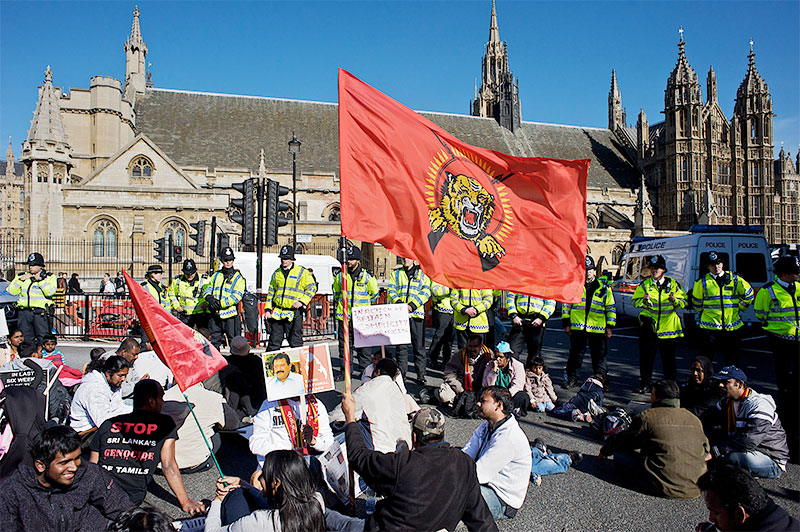
The US utilised Hamas attack to prepare an emergency funding project that conveniently accommodated Ukraine battling Russia. The funding amounted to USD 105 bn in military and humanitarian aid to Kiev and Tel Aviv. Having visited Tel Aviv last week, US President Joe Biden declared that their security is directly connected to the success of Ukraine and Israel. Interestingly the largest share of USD 105 bn allocation has been earmarked for Ukraine (more than USD 61 bn) with Israel receiving over USD 14 bn, over nine bn for humanitarian assistance for Ukraine, Israel and Gaza and over USD 14 bn for border enforcement with Mexico. Regardless of US pouring military assistance, Israel remains unsure of its capacity to fight a ground war in Gaza to the finish. The delay in launching the ground offensive underscores Israel’s continuing dilemma. That is the reality.
By Shamindra Ferdinando
Unparalleled Oct. 7 Hamas attack on Israel, triggered a spate of comments on Sri Lanka’s war against the Liberation Tigers of Tamil Eelam (LTTE) that was brought to a successful end in May 2009. Hamas captured about 230 persons, including Israeli military personnel and foreigners and moved them to areas under their control. The abducted persons’ whereabouts remain unclear though four, including two Americans were released so far. Respected expert on terrorism experienced in Sri Lanka, M.R. Narayan Swamy, discussed the similarities of Sri Lanka’s conflict and the ongoing Israel-Gaza war. New Delhi based Swamy, who had served UNI and AFP during his decades long career discussed the issues at hand while acknowledging no two situations were absolutely comparable. Swamy currently serves as the Executive Director of IANS (Indo-Asian News Service).
Now there is a possibility of Lebanon being dragged into the conflict as Iran threatened Israel amidst ongoing heavy exchange of fire between Israeli forces and Lebannon based Hezbollah. However, the battles on the Lebanese border have tied up several Israeli Divisions thereby preventing them from joining the formations deployed against Hamas.
‘How’s Hamas’ attack similar to that of LTTE?’ and ‘Hamas’ offensive on Israel may bring it closer to LTTE’s fate’ dealt with the issues involved. Let me reproduce Swamy’s comment: “Oct 7 could be a turning point for Hamas similar to what happened to the Liberation Tigers of Tamil Eelam in Sri Lanka in 2006. Let me explain. Similar to Hamas, the LTTE grew significantly over time eventually gaining control of a significant portion of Sri Lanka’s land and coast. The LTTE was even more formidable than Hamas. It had a strong army, growing air force and a deadly naval presence. Unlike Hamas the LTTE successfully assassinated high ranking political figures in Sri Lanka and India. Notably LTTE achieved this without direct support from any country well Hamas received military and financial backing from Iran and some other states [emphasis is mine]. The LTTE became too sure of their victories overtime. They thought, they could never be beaten and that starting a war would always make them stronger. But in 2006 when they began Eelam War 1V their leader Velupillai Prabhakaran couldn’t have foreseen that within three years he and his prominent group would be defeated. Prabhakaran believed gathering tens of thousands of Tamils during the last stages of war would protect them and Sri Lanka wouldn’t unleash missiles and rockets. Colombo proved him wrong. They were hit. By asking the people not to flee Gaza despite Israeli warnings Hamas is taking a similar line. Punishing all Palestinians for Hamas’ actions is unjust just like punishing all Tamils for LTTE’s actions was wrong. The LTTE claimed to fight for Tamils without consulting them and Hamas claimed to represent Palestinians without seeking the approval for the Oct.7 strike. Well two situations are not absolutely comparable. We can be clear that Hamas is facing a situation similar to what the LTTE faced shortly before its end. Will Hamas meet a similar fate as the LTTE? Only time will answer that question.”
Swamy quite conveniently refrained from mentioning India’s direct role in setting up one of the deadliest terror projects in the world in the 80s. How could he forget the loss of nearly 1,400 Indian military personnel and double that number wounded here?
Former Editor of The Hindu Malini Parthasarathy who also had served as Chairperson of The Hindu Group released a list of politicians assassinated by the LTTE, as she hit back hard at those who raged against the comparison of the Hamas to the LTTE. The list included two Jaffna District MPs, Arumugam Murugesu Alalasundaram and Visvanathan Dharmalingam, assassinated in early Sept 1985. Slain Visvanathan Dharmalingam’s son, Dharmalingam Siddharthan, who represents the Vanni electoral district on the Illankai Thamil Arasu Kadchi (ITAK) is on record as having said that the two MPs were abducted and killed by TELO (Tamil Eelam Liberation Organisation.) gunmen. The list posted by Parthasarathy included PLOTE leader Uma Maheswaran assassinated in Colombo in July 1989. The LTTE hadn’t been involved in that killing. Maheswaran is believed to have been killed by his onetime associates, perhaps over the abortive PLOTE raid on the Maldives in Nov 1988. India never bothered at least to acknowledge that the Maldives raid was carried out by men trained by India to destabilise Sri Lanka. There is no doubt that Maheswasran’s killers, too, were known to the Indian intelligence at that time.
Before rushing into conclusions regarding Hamas and LTTE, perhaps a proper examination of the circumstances they emerged is necessary. The two situations-fourth phase of the Eelam conflict and the latest Hamas strike on Israel and the devastating counter attack cannot be compared under any circumstances. Efforts to compare the two issues is more like comparing apples and oranges, though mutually Tamils and Sinhalese have so many commonalities having intermingled throughout history like the Arabs and Jews.
It is no doubt Jews are a people that suffered persecution throughout known history under Assyrians, Babylonians to Romans and so forth. Such persecution includes expulsion of Jews from England in 1290 and from Spain 1492. So what Hitler and the Germans did was to take the historic process to another extreme.
Yet to blame the Palestinians and treat them like animals and to simply butcher them for the latest uprising by Hamas for all the humiliations and suffering they have been going through non-stop since Naqba in1948, from the time of the creation of Israel is to allow the creators of the problem, including the UK, USA and United Nations to wash all their sins on the true other victims of this conflict, the Palestinians.
It would be pertinent to mention that Israel in spite of having one of the world’s best fighting armed forces with 100 percent backing from the West cannot totally eradicate Hamas the way Sri Lanka dealt with the LTTE.
The circumstances under which the LTTE launched a large-scale offensive in Aug 2006 and its objectives had been very much different from that of Hamas. The LTTE really believed that it could have defeated the Sri Lankan military in the north by cutting off the sea supply route from Trincomalee to Kankesanthurai and simultaneously overrunning the Kilali-Muhamalai-Nagarkovil forward defence line (FDL). The total collapse of the FDL could have allowed the LTTE to eradicate isolated fighting formations trapped north of the FDL. But, in the case of the Gaza war, the Hamas strike was meant to provoke Israel to unleash a massive unbridled counter attack that caused maximum losses on the civilians. As Hamas expected the Israeli counter attack has triggered massive protests in the West against their leaders. They have been accused of encouraging violence against Palestine. Saudi Arabia, Jordan and other US allies are under heavy pressure from Muslims and other horrified communities’ world over to take a stand against the US.
A Western lifeline for LTTE
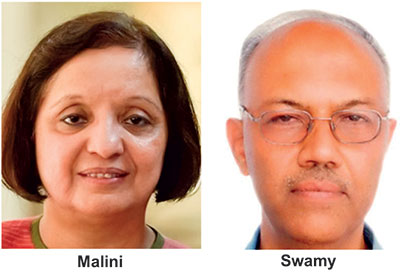 UK Premier Rishi Sunak pledged unequivocal support for Israel before flying to the Jewish State where he reiterated British commitment. Sunak followed US President Joe Biden, the first foreign leader to visit Tel Aviv amidst indiscriminate attacks on Gaza. At the time this comment was written on Oct 22, the international media reported the possibility of French President Emmanuel Macron also undertaking a visit to Tel Aviv. Canada, too, declared support for Israel. Their declaration of support for Israel didn’t surprise anyone.
UK Premier Rishi Sunak pledged unequivocal support for Israel before flying to the Jewish State where he reiterated British commitment. Sunak followed US President Joe Biden, the first foreign leader to visit Tel Aviv amidst indiscriminate attacks on Gaza. At the time this comment was written on Oct 22, the international media reported the possibility of French President Emmanuel Macron also undertaking a visit to Tel Aviv. Canada, too, declared support for Israel. Their declaration of support for Israel didn’t surprise anyone.
Against the backdrop of various interested parties comparing the Vanni situation and the developing regional crisis with devastating global implications, it would be pertinent to examine the Western response to the eelam war.
Western powers intervened on behalf of the LTTE facing annihilation in the hands of the Sri Lankan military. By late Feb 2009, the LTTE had taken such a beating on the Vanni front, its command and control structures were in tatters. Responding to LTTE’s pleas for help backed by demonstrations organised by Tamil Diaspora in Europe and Canada, the then British and French Foreign Ministers, David Miliband and Bernard Kouchner arrived in Colombo in late April 2009. They demanded an immediate halt to offensive action. They wanted to visit Prabhakaran. The combined British – French move backed by the US was meant to save Prabhakaran. Later a diplomatic cable originating from the US mission in London disclosed Miliband’s intervention was due to domestic political compulsions. Interested parties also speculated about a US role in a possible bid to evacuate Prabhakaran but Sri Lanka insisted that the offensive could be brought to an end only if Prabhakaran surrendered.
In May-June 1987 when the SLA engaged in ‘Operation Liberation’ and advanced on Prabhakaran’s Vadamaratchchi base, India intervened. Having forced JRJ to call off the first Brigade-level offensive, Indian Mi-17s landed in Jaffna on July 24 to evacuate Prabhakaran, his wife and the two children along with several other LTTE cadres. This happened five days before the signing of the Indo-Lanka accord in Colombo that paved the way for the deployment of the Indian Army (July 1987-March 1990).
Had India allowed Sri Lanka to finish off the LTTE, it could have avoided a disastrous war here. Thousands of lives could have been saved if India didn’t play politics with the Sri Lanka issue. New Delhi paid a very heavy price and over a year after its pull out the LTTE assassinated wartime Indian Premier Rajiv Gandhi during a general election campaign in May 1991.
Let us get back to the Western effort to rescue Prabhakaran, the way India did in July 1987. The Western objective was the same though the tactics and circumstances were different. The UK and France with the blessings of the UN and the US tried to save Prabhakaran in late April 2009 to fight another day.
India-Israel relations
Although Indian Premier Narendra Modi won’t fly to Tel Aviv to reiterate their support for Israel, New Delhi would be extremely cautious in addressing the issue. India cannot jeopardise her growing relationship with Israel, a key weapons and technology supplier over the years though in the 80s New Delhi strongly opposed Israeli presence in Sri Lanka. The Jewish state is one of the few countries which backed Sri Lanka throughout the war against separatist Tamil terrorism. A range of Israeli arms, ammunition and equipment made Sri Lanka’s triumph over terrorism possible.
Since India joined the US-led club, New Delhi has received a massive boost to her overall military capacity thanks to Israel and New Delhi would do nothing to upset her relationship with the Jewish State whose continuing support is of critical importance, especially against the backdrop of Russia-Ukraine conflict. The acquisition of Pegasus spyware has overnight changed India’s capabilities. That is the undeniable truth. India being one of the four members of ‘Quad’ that included US, Australia and Japan, is now in a strategic relationship with Israel. Massive Israeli weapons sales have boosted the Indian military facing China and Pakistan.
In India, thousands of people demonstrated in many cities in support of Palestine experiencing an escalation of violence perpetrated by Israel. In Mumbai, Kerala and Lahore, demonstrators expressed their solidarity with the Palestinian people and called for an end to the Israeli occupation and blockade of Gaza.
But, on the other hand, Hamas, in spite of overall Israeli prowess and strategic assets available, appeared to have achieved 100 percent surprise as Israel did nothing until large scale infiltration at an unprecedented level took place right under their nose. The Hamas action appeared to have united the people world over against the US-led grouping and taken the heat off Russia engaged in a difficult war in Ukraine.
A considered move
Perhaps one of the most significant decisions taken by Sri Lanka as the LTTE deteriorated on the Vanni east front was to invite India to deploy a fully-fledged medical team close to a point where the wounded were brought in by sea. Sri Lanka made the request several weeks after the military brought Kilinochchi under its control. It would be pertinent to mention that Kilinochchi functioned as their main administrative centre after the military regained Jaffna in late 1995. The loss of Kilinochchi in the first week of January 2009 quite clearly stunned the LTTE, Tamil Diaspora as well as those foreign powers confident of the group’s battlefield prowess. The government moved quickly to bring in an Indian medical team amidst accusations that the war wounded were being deprived of treatment. The team consisted of 62 personnel. India set up a medical facility at Pulmoddai, north of Trincomalee.
Sri Lanka went out of its way to treat those who had been evacuated from Puthumathalan to Pulmoddai. The writer had been one of the few journalists taken to the Puthumathalan seas by the Navy to witness the evacuation of the wounded by the ICRC and then transferred in a ship to Pulmoddai. This was in late April 2009. Subsequent to the visit to the Puthumathalan seas and Navy deployment at Chalai, the writer had an opportunity to meet the Indian medical team at Pulmoddai.
After the war, the Indian High Commission declared that their Pulmoddai facility treated over 3,000 war wounded and soon after the war ended the medical mission moved to Zone 1 of Menik Farm displaced persons camp. India pulled out its team from Menik Farm at the end of August, 2009 after having treated over 25,000 displaced persons. Sri Lanka opened a sea route between Puthumathalan and Pulmoddai in early 2009, soon after the closure of the overland route to and from the LTTE held area. The move underscored the government’s determination to assist the civilian population.
Unfortunately, Sri Lanka never made a real effort to set the record straight. Successive governments conveniently failed to place all available information before the international community. Any other country engaged in such a huge military operation would have second thoughts in giving foreigners direct access to the war wounded. But, Sri Lanka did.
Sri Lanka’s continued failure to mount a strong defence at the Geneva based Human Rights Council is a mystery. The Yahapalana government betrayed the war winning military by co-sponsoring an accountability resolution against the country. That was on Oct 01, 2015.
Until the very end, Sri Lanka allowed the World Food Programme (WFP) under the protection of the ICRC to move essential supplies to those living in the rapidly shrinking Vanni territory under the LTTE’s control. Once the overland route had to be closed, essential items and medicine were despatched in ships to Puthumathalan. The world shouldn’t forget that selected members of the Colombo-based diplomatic community were given real time drone footage of the Army breaking through the LTTE positions to facilitate a massive rescue operation. Have you ever heard of an Army accused of perpetrating genocide breaking enemy line for those trapped within to escape and take refuge within the territory under its control?
Israel fought the first Gaza war (Dec 27 2008-18 January 2009) against Hamas in the wake of heavy rocket attacks on its territory. It was the first large-scale invasion of Palestinian territory after Hamas took over Gaza from Fatah in 2007. The Israelis called the offensive ‘Cast Lead.’ Regardless of losses suffered, Hamas retained its command and control structure and was back in action soon. The possibility of Israel achieving victory over Hamas appeared remote and unrealistic. However, the Sri Lanka military during Dec 2008-January 2009 delivered a knockout blow to the LTTE. By the end of January 2009, the LTTE’s command and control structures were gone. A massive naval cordon involving a range of vessels, spearheaded by Fast Attack Craft (FACs) blocked sea escape route while Air Force was on high alert to intervene in case an attempt was made to evacuate Velupillai Prabhakaran, his family and top commanders from the battlefield. In a bid to reduce reaction time, the Air Force shifted a pair of jets from Katunayake air base to China Bay. The rest is history.
Although Israel claimed victory in the first Gaza war, Hamas was soon back in action. According to international media reports, Hamas fired over 200 rockets and dozens of mortar rounds at Israel during the second week of Nov 2012. Tel Aviv was hit for the first time since 1991 Gulf war when Iraqi Scud missiles landed therein. Israel launched ‘Operation Pillar of Defence’ to neutralize the threat but never extended the operation to a ground incursion.
In July 2014, Israel carried out ‘Operation Protective Edge’ which included a minor ground incursion –just a few kms into Gaza. This particular operation was conducted in the wake of breaking up of Hamas association with Egypt over the former’s alliance with the Muslim Brotherhood which the then Egyptian President Abdel Fattah el-Sisi considered a threat to him. The issue prompted Egypt to close down smuggling tunnels from Egypt to Gaza, one of the major revenue sources for Hamas. The two-week long operation obviously didn’t cause serious damage to Hamas. Over the past several years, Hamas clearly succeeded in building up a massive arsenal that overwhelmed the much touted Iron Dome-a highly mobile air defence system jointly developed by the US and Israel. The latest Hamas attack proved that terrorism cannot be defeated by air and naval bombardments and availability of high tech arms, ammunition and equipment. Ground forces had to go the whole hog whatever the consequences.
The Sri Lanka military achieved irrevocable victory in a sustained campaign in the East (Aug 2006-June 2007) and North/Vanni (March 2007-May 2009) but our corrupt and utterly useless political party system never built on the military’s success. Today war winning Sri Lanka is a bankrupt country dependent on Western tool IMF and tied to the Washington headquartered lending body having obtained a USD 2.9 bn bailout package. The IMF suspended the programme recently to pressure the government to end its corrupt ways and means and to take tangible measures to meet projected revenue targets.
Features
Handunnetti and Colonial Shackles of English in Sri Lanka
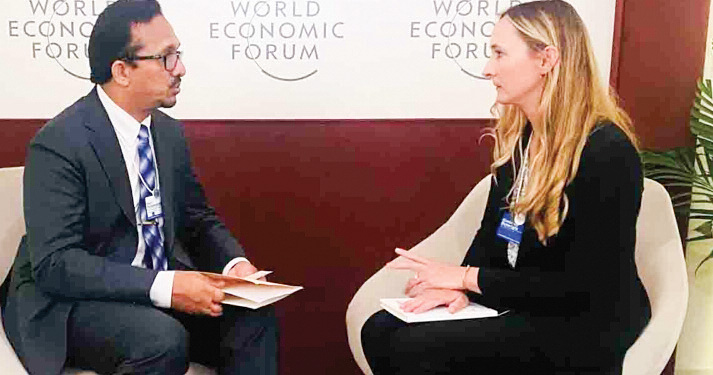
“My tongue in English chains.
I return, after a generation, to you.
I am at the end
of my Dravidic tether
hunger for you unassuaged
I falter, stumble.”
– Indian poet R. Parthasarathy
 When Minister Sunil Handunnetti addressed the World Economic Forum’s ‘Is Asia’s Century at Risk?’ discussion as part of the Annual Meeting of the New Champions 2025 in June 2025, I listened carefully both to him and the questions that were posed to him by the moderator. The subsequent trolling and extremely negative reactions to his use of English were so distasteful that I opted not to comment on it at the time. The noise that followed also meant that a meaningful conversation based on that event on the utility of learning a powerful global language and how our politics on the global stage might be carried out more successfully in that language was lost on our people and pundits, barring a few commentaries.
When Minister Sunil Handunnetti addressed the World Economic Forum’s ‘Is Asia’s Century at Risk?’ discussion as part of the Annual Meeting of the New Champions 2025 in June 2025, I listened carefully both to him and the questions that were posed to him by the moderator. The subsequent trolling and extremely negative reactions to his use of English were so distasteful that I opted not to comment on it at the time. The noise that followed also meant that a meaningful conversation based on that event on the utility of learning a powerful global language and how our politics on the global stage might be carried out more successfully in that language was lost on our people and pundits, barring a few commentaries.
Now Handunnetti has reopened the conversation, this time in Sri Lanka’s parliament in November 2025, on the utility of mastering English particularly for young entrepreneurs. In his intervention, he also makes a plea not to mock his struggle at learning English given that he comes from a background which lacked the privilege to master the language in his youth. His clear intervention makes much sense.
The same ilk that ridiculed him when he spoke at WEF is laughing at him yet again on his pronunciation, incomplete sentences, claiming that he is bringing shame to the country and so on and so forth. As usual, such loud, politically motivated and retrograde critics miss the larger picture. Many of these people are also among those who cannot hold a conversation in any of the globally accepted versions of English. Moreover, their conceit about the so-called ‘correct’ use of English seems to suggest the existence of an ideal English type when it comes to pronunciation and basic articulation. I thought of writing this commentary now in a situation when the minister himself is asking for help ‘in finding a solution’ in his parliamentary speech even though his government is not known to be amenable to critical reflection from anyone who is not a party member.
The remarks at the WEF and in Sri Lanka’s parliament are very different at a fundamental level, although both are worthy of consideration – within the realm of rationality, not in the depths of vulgar emotion and political mudslinging.
The problem with Handunnetti’s remarks at WEF was not his accent or pronunciation. After all, whatever he said could be clearly understood if listened to carefully. In that sense, his use of English fulfilled one of the most fundamental roles of language – that of communication. Its lack of finesse, as a result of the speaker being someone who does not use the language professionally or personally on a regular basis, is only natural and cannot be held against him. This said, there are many issues that his remarks flagged that were mostly drowned out by the noise of his critics.
Given that Handunnetti’s communication was clear, it also showed much that was not meant to be exposed. He simply did not respond to the questions that were posed to him. More bluntly, a Sinhala speaker can describe the intervention as yanne koheda, malle pol , which literally means, when asked ‘Where are you going?’, the answer is ‘There are coconuts in the bag’.
He spoke from a prepared text which his staff must have put together for him. However, it was far off the mark from the questions that were being directly posed to him. The issue here is that his staff appears to have not had any coordination with the forum organisers to ascertain and decide on the nature of questions that would be posed to the Minister for which answers could have been provided based on both global conditions, local situations and government policy. After all, this is a senior minister of an independent country and he has the right to know and control, when possible, what he is dealing with in an international forum.
This manner of working is fairly routine in such international fora. On the one hand, it is extremely unfortunate that his staff did not do the required homework and obviously the minister himself did not follow up, demonstrating negligence, a want for common sense, preparedness and experience among all concerned. On the other hand, the government needs to have a policy on who it sends to such events. For instance, should a minister attend a certain event, or should the government be represented by an official or consultant who can speak not only fluently, but also with authority on the subject matter. That is, such speakers need to be very familiar with the global issues concerned and not mere political rhetoric aimed at local audiences.
Other than Handunnetti, I have seen, heard and also heard of how poorly our politicians, political appointees and even officials perform at international meetings (some of which are closed door) bringing ridicule and disastrous consequences to the country. None of them are, however, held responsible.
Such reflective considerations are simple yet essential and pragmatic policy matters on how the government should work in these conditions. If this had been undertaken, the WEF event might have been better handled with better global press for the government. Nevertheless, this was not only a matter of English. For one thing, Handunnetti and his staff could have requested for the availability of simultaneous translation from Sinhala to English for which pre-knowledge of questions would have been useful. This is all too common too. At the UN General Assembly in September, President Dissanayake spoke in Sinhala and made a decent presentation.
The pertinent question is this; had Handunetti had the option of talking in Sinhala, would the interaction have been any better? That is extremely doubtful, barring the fluency of language use. This is because Handunnetti, like most other politicians past and present, are good at rhetoric but not convincing where substance is concerned, particularly when it comes to global issues. It is for this reason that such leaders need competent staff and consultants, and not mere party loyalists and yes men, which is an unfortunate situation that has engulfed the whole government.
What about the speech in parliament? Again, as in the WEF event, his presentation was crystal clear and, in this instance, contextually sensible. But he did not have to make that speech in English at all when decent simultaneous translation services were available. In so far as content was concerned, he made a sound argument considering local conditions which he knows well. The minister’s argument is about the need to ensure that young entrepreneurs be taught English so that they can deal with the world and bring investments into the country, among other things. This should actually be the norm, not only for young entrepreneurs, but for all who are interested in widening their employment and investment opportunities beyond this country and in accessing knowledge for which Sinhala and Tamil alone do not suffice.
As far as I am concerned, Handunetti’s argument is important because in parliament, it can be construed as a policy prerogative. Significantly, he asked the Minister of Education to make this possible in the educational reforms that the government is contemplating.
He went further, appealing to his detractors not to mock his struggle in learning English, and instead to become part of the solution. However, in my opinion, there is no need for the Minister to carry this chip on his shoulder. Why should the minister concern himself with being mocked for poor use of English? But there is a gap that his plea should have also addressed. What prevented him from mastering English in his youth goes far deeper than the lack of a privileged upbringing.
The fact of the matter is, the facilities that were available in schools and universities to learn English were not taken seriously and were often looked down upon as kaduwa by the political spectrum he represents and nationalist elements for whom the utilitarian value of English was not self-evident. I say this with responsibility because this was a considerable part of the reality in my time as an undergraduate and also throughout the time I taught in Sri Lanka.
Much earlier in my youth, swayed by the rhetoric of Sinhala language nationalism, my own mastery of English was also delayed even though my background is vastly different from the minister. I too was mocked, when two important schools in Kandy – Trinity College and St. Anthony’s College – refused to accept me to Grade 1 as my English was wanting. This was nearly 20 years after independence. I, however, opted to move on from the blatant discrimination, and mastered the language, although I probably had better opportunities and saw the world through a vastly different lens than the minister. If the minister’s commitment was also based on these social and political realities and the role people like him had played in negating our English language training particularly in universities, his plea would have sounded far more genuine.
If both these remarks and the contexts in which they were made say something about the way we can use English in our country, it is this: On one hand, the government needs to make sure it has a pragmatic policy in place when it sends representatives to international events which takes into account both a person’s language skills and his breadth of knowledge of the subject matter. On the other hand, it needs to find a way to ensure that English is taught to everyone successfully from kindergarten to university as a tool for inclusion, knowledge and communication and not a weapon of exclusion as is often the case.
This can only bear fruit if the failures, lapses and strengths of the country’s English language teaching efforts are taken into cognizance. Lamentably, division and discrimination are still the main emotional considerations on which English is being popularly used as the trolls of the minister’s English usage have shown. It is indeed regrettable that their small-mindedness prevents them from realizing that the Brits have long lost their long undisputed ownership over the English language along with the Empire itself. It is no longer in the hands of the colonial masters. So why allow it to be wielded by a privileged few mired in misplaced notions of elitism?
Features
Finally, Mahinda Yapa sets the record straight
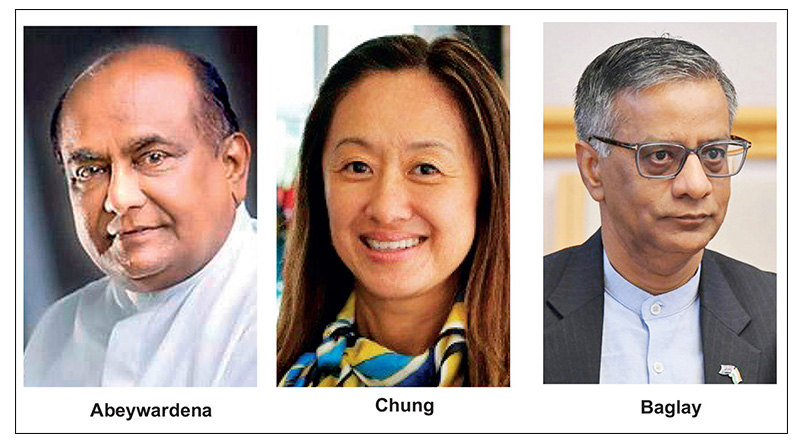
Clandestine visit to Speaker’s residence:
Finally, former Speaker Mahinda Yapa Abeywardena has set the record straight with regard to a controversial but never properly investigated bid to swear in him as interim President. Abeywardena has disclosed the circumstances leading to the proposal made by external powers on the morning of 13 July, 2022, amidst a large scale staged protest outside the Speaker’s official residence, situated close to Parliament.
Lastly, the former parliamentarian has revealed that it was then Indian High Commissioner, in Colombo, Gopal Baglay (May 2022 to December 2023) who asked him to accept the presidency immediately. Professor Sunanda Maddumabandara, who served as Senior Advisor (media) to President Ranil Wickremesinghe (July 2022 to September 2024), disclosed Baglay’s direct intervention in his latest work, titled ‘Aragalaye Balaya’ (Power of Aragalaya).
Prof. Maddumabandara quoted Abeywardena as having received a startling assurance that if he agreed to accept the country’s leadership, the situation would be brought under control, within 45 minutes. Baglay had assured Abeywardena that there is absolutely no harm in him succeeding President Gotabaya Rajapaksa, in view of the developing situation.
The author told the writer that only a person who had direct control over the violent protest campaign could have given such an assurance at a time when the whole country was in a flux.
One-time Vice Chancellor of the Kelaniya University, Prof. Maddumabandara, launched ‘Aragalaye Balaya’ at the Sri Lanka Foundation on 20 November. In spite of an invitation extended to former President Gotabaya Rajapaksa, the ousted leader hadn’t attended the event, though UNP leader Ranil Wickremesinghe was there. Maybe Gotabaya felt the futility of trying to expose the truth against evil forces ranged against them, who still continue to control the despicable agenda.
Obviously, the author has received the blessings of Abeywardena and Wickremesinghe to disclose a key aspect in the overall project that exploited the growing resentment of the people to engineer change of Sri Lankan leadership.
The declaration of Baglay’s intervention has contradicted claims by National Freedom Front (NFF) leader Wimal Weerawansa (Nine: The hidden story) and award-winning writer Sena Thoradeniya (Galle Face Protest: System change for anarchy) alleged that US Ambassador Julie Chung made that scandalous proposal to Speaker Abeywardena. Weerawansa and Thoradeniya launched their books on 25 April and 05 July, 2023, at the Sri Lanka Foundation and the National Library and Documentation Services Board, Independence Square, respectively. Both slipped in accusing Ambassador Chung of making an abortive bid to replace Gotabaya Rajapaksa with Mahinda Yapa Abeywardena.
Ambassador Chung categorically denied Weerawansa’s allegation soon after the launch of ‘Nine: The hidden story’ but stopped short of indicating that the proposal was made by someone else. Chung had no option but to keep quiet as she couldn’t, in response to Weerawansa’s claim, have disclosed Baglay’s intervention, under any circumstances, as India was then a full collaborator with Western designs here for its share of spoils. Weerawansa, Thoradeniya and Maddumabandara agree that Aragalaya had been a joint US-Indian project and it couldn’t have succeeded without their intervention. Let me reproduce the US Ambassador’s response to Weerawansa, who, at the time of the launch, served as an SLPP lawmaker, having contested the 2020 August parliamentary election on the SLPP ticket.
“I am disappointed that an MP has made baseless allegations and spread outright lies in a book that should be labelled ‘fiction’. For 75 years, the US [and Sri Lanka] have shared commitments to democracy, sovereignty, and prosperity – a partnership and future we continue to build together,” Chung tweeted Wednesday 26 April, evening, 24 hours after Weerawansa’s book launch.
Interestingly, Gotabaya Rajapaksa has been silent on the issue in his memoirs ‘The Conspiracy to oust me from Presidency,’ launched on 07 March, 2024.
What must be noted is that our fake Marxists, now entrenched in power, were all part and parcel of Aragalaya.
A clandestine meeting
Abeywardena should receive the appreciation of all for refusing to accept the offer made by Baglay, on behalf of India and the US. He had the courage to tell Baglay that he couldn’t accept the presidency as such a move violated the Constitution. In our post-independence history, no other politician received such an offer from foreign powers. When Baglay stepped up pressure, Abeywardena explained that he wouldn’t change his decision.
Maddumabandara, based on the observations made by Abeywardena, referred to the Indian High Commissioner entering the Speaker’s Official residence, unannounced, at a time protesters blocked the road leading to the compound. The author raised the possibility of Baglay having been in direct touch with those spearheading the high profile political project.
Clearly Abeywardena hadn’t held back anything. The former Speaker appeared to have responded to those who found fault with him for not responding to allegations, directed at him, by revealing everything to Maddumabandara, whom he described in his address, at the book launch, as a friend for over five decades.
At the time, soon after Baglay’s departure from the Speaker’s official residence, alleged co-conspirators Ven. Omalpe Sobitha, accompanied by Senior Professor of the Sinhala Faculty at the Colombo University, Ven. Agalakada Sirisumana, health sector trade union leader Ravi Kumudesh, and several Catholic priests, arrived at the Speaker’s residence where they repeated the Indian High Commissioner’s offer. Abeywardena repeated his previous response despite Sobitha Thera acting in a threatening manner towards him to accept their dirty offer. Shouldn’t they all be investigated in line with a comprehensive probe?
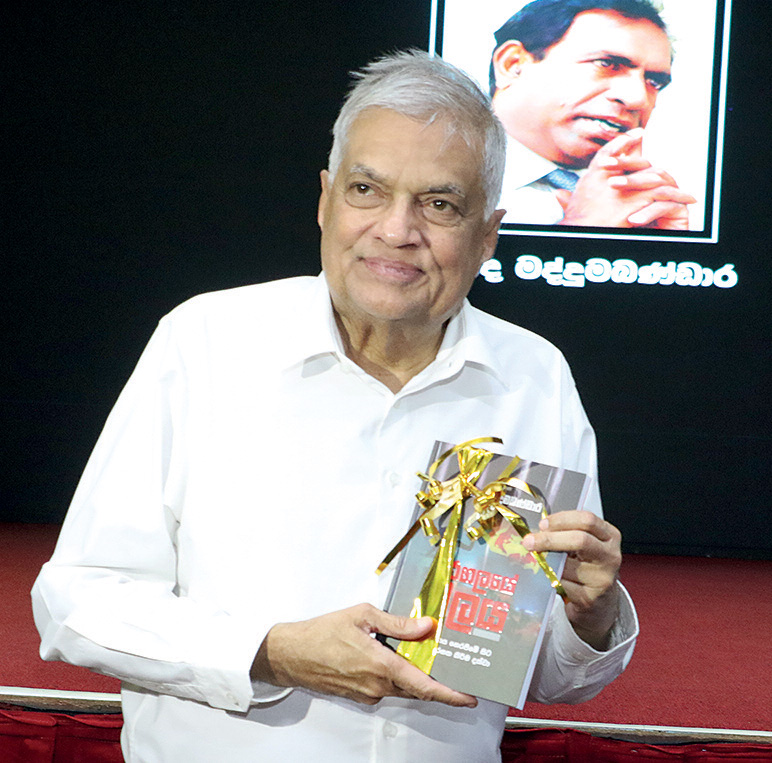
Ex-President Wickremesinghe with a copy of Aragalaye Balaya he received from its author, Prof. Professor Sunanda Maddumabandara, at the Sri Lanka Foundation recently (pic by Nishan S Priyantha)
On the basis of what Abeywardena had disclosed to him, Maddumabanadara also questioned the circumstances of the deployment of the elite Special Task Force (STF) contingent at the compound. The author asked whether that deployment, without the knowledge of the Speaker, took place with the intervention of Baglay.
Aragalaye Balaya
is a must read for those who are genuinely interested in knowing the unvarnished truth. Whatever the deficiencies and inadequacies on the part of the Gotabaya Rajapaksa administration, external powers had engineered a change of government. The writer discussed the issues that had been raised by Prof. Maddumabandara and, in response to one specific query, the author asserted that in spite of India offering support to Gotabaya Rajapaksa earlier to get Ranil Wickremesinghe elected as the President by Parliament to succeed him , the latter didn’t agree with the move. Then both the US and India agreed to bring in the Speaker as the Head of State, at least for an interim period.
If Speaker Abeywardena accepted the offer made by India, on behalf of those backing the dastardly US backed project, the country could have experienced far reaching changes and the last presidential election may not have been held in September, 2004.
After the conclusion of his extraordinary assignment in Colombo, Baglay received appointment as New Delhi’s HC in Canberra. Before Colombo, Baglay served in Indian missions in Ukraine, Russia, the United Kingdom, Nepal and Pakistan (as Deputy High Commissioner).
Baglay served in New Delhi, in the office of the Prime Minister of India, and in the Ministry of External Affairs as its spokesperson, and in various other positions related to India’s ties with her neighbours, Europe and multilateral organisations.
Wouldn’t it be interesting to examine who deceived Weerawansa and Thoradeniya who identified US Ambassador Chung as the secret visitor to the Speaker’s residence. Her high-profile role in support of the project throughout the period 31 March to end of July, 2022, obviously made her an attractive target but the fact remains it was Baglay who brought pressure on the then Speaker. Mahinda Yapa Abeywardena’s clarification has given a new twist to “Aragalaya’ and India’s diabolical role.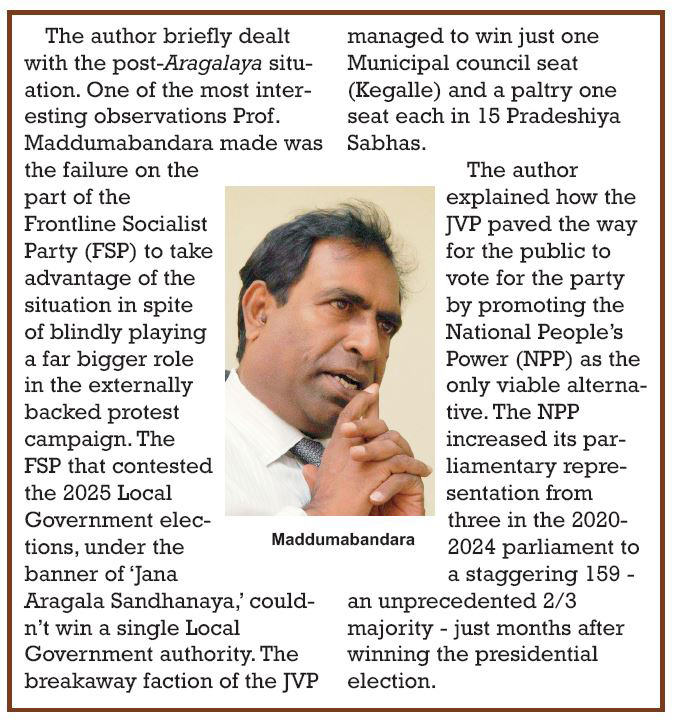
Absence of investigations
Sri Lanka never really wanted to probe the foreign backed political plot to seize power by extra-parliamentary means. Although some incidents had been investigated, the powers that be ensured that the overall project remained uninvestigated. In fact, Baglay’s name was never mentioned regarding the developments, directly or indirectly, linked to the devious political project. If not for Prof. Maddumabandara taking trouble to deal with the contentious issue of regime change, Baglay’s role may never have come to light. Ambassador Chung would have remained the target of all those who found fault with US interventions. Let me be clear, the revelation of Baglay’s clandestine meeting with the Speaker didn’t dilute the role played by the US in Gotabaya Rajapaksa’s removal.
If Prof. Maddumabandara propagated lies, both the author and Abeywardana should be appropriately dealt with. Aragalaye Balaya failed to receive the desired or anticipated public attention. Those who issue media statements at the drop of a hat conveniently refrained from commenting on the Indian role. Even Abeywardena remained silent though he could have at least set the record straight after Ambassador Chung was accused of secretly meeting the Speaker. Abeywardena could have leaked the information through media close to him. Gotabaya Rajapaksa and Ranil Wickremesinghe, too, could have done the same but all decided against revealing the truth.
A proper investigation should cover the period beginning with the declaration made by Gotabaya Rajapaksa’s government, in April 2022, regarding the unilateral decision to suspend debt repayment. But attention should be paid to the failure on the part of the government to decide against seeking assistance from the International Monetary Fund (IMF) to overcome the crisis. Those who pushed Gotabaya Rajapaksa to adopt, what they called, a domestic solution to the crisis created the environment for the ultimate collapse that paved the way for external interventions. Quite large and generous Indian assistance provided to Sri Lanka at that time should be examined against the backdrop of a larger frightening picture. In other words, India was literally running with the sheep while hunting with the hounds. Whatever the criticism directed at India over its role in regime change operation, prompt, massive and unprecedented post-Cyclone Ditwah assistance, provided by New Delhi, saved Sri Lanka. Rapid Indian response made a huge impact on Sri Lanka’s overall response after having failed to act on a specific 12 November weather alert.
It would be pertinent to mention that all governments, and the useless Parliament, never wanted the public to know the truth regarding regime change project. Prof. Maddumabandara discussed the role played by vital sections of the armed forces, lawyers and the media in the overall project that facilitated external operations to force Gotabaya Rajapaksa out of office. The author failed to question Wickremesinghe’s failure to launch a comprehensive investigation, with the backing of the SLPP, immediately after he received appointment as the President. There seems to be a tacit understanding between Wickremesinghe and the SLPP that elected him as the President not to initiate an investigation. Ideally, political parties represented in Parliament should have formed a Special Parliamentary Select Committee (PSC) to investigate the developments during 2019 to the end of 2022. Those who had moved court against the destruction of their property, during the May 2022 violence directed at the SLPP, quietly withdrew that case on the promise of a fresh comprehensive investigation. This assurance given by the Wickremesinghe government was meant to bring an end to the judicial process.
When the writer raised the need to investigate external interventions, the Human Rights Commission of Sri Lanka (HRCSL) sidestepped the issue. Shame on the so-called independent commission, which shows it is anything but independent.
Sumanthiran’s proposal
Since the eradication of the Liberation Tigers of Tamil Eelam (LTTE) in May 2009, the now defunct Tamil National Alliance’s (TNA) priority had been convincing successive governments to withdraw the armed forces/ substantially reduce their strength in the Northern and Eastern Provinces. The Illankai Thamil Arasu Kadchi (ITAK)-led TNA, as well as other Tamil political parties, Western powers, civil society, Tamil groups, based overseas, wanted the armed forces out of the N and E regions.
Abeywardena also revealed how the then ITAK lawmaker, M.A. Sumanthiran, during a tense meeting chaired by him, in Parliament, also on 13 July, 2022, proposed the withdrawal of the armed forces from the N and E for redeployment in Colombo. The author, without hesitation, alleged that the lawmaker was taking advantage of the situation to achieve their longstanding wish. The then Speaker also disclosed that Chief Opposition Whip Lakshman Kiriella and other party leaders leaving the meeting as soon as the armed forces reported the protesters smashing the first line of defence established to protect the Parliament. However, leaders of minority parties had remained unruffled as the situation continued to deteriorate and external powers stepped up efforts to get rid of both Gotabaya Rajapaksa and Ranil Wickremesinghe to pave the way for an administration loyal and subservient to them. Foreign powers seemed to have been convinced that Speaker Abeywardena was the best person to run the country, the way they wanted, or till the Aragalaya mob captured the House.
The Author referred to the role played by the media, including social media platforms, to promote Gotabaya Rajapaksa’s successor. Maddumamabandara referred to the Hindustan Times coverage to emphasise the despicable role played by a section of the media to manipulate the rapid developments that were taking place. The author also dealt with the role played by the Janatha Vimukthi Peramuna (JVP) in the project with the focus on how that party intensified its actions immediately after Gotabaya Rajapaksa stepped down.
Disputed assessment
The Author identified Ministers Bimal Rathnayaka, Sunil Handunetti and K.D. Lal Kantha as the persons who spearheaded the JVP bid to seize control of Parliament. Maddumabanda unflinchingly compared the operation, mounted against Gotabaya Rajapaksa, with the regime change operations carried out in Iraq, Libya, Egypt and Ukraine. Asserting that governments loyal to the US-led Western block had been installed in those countries, the author seemed to have wrongly assumed that external powers failed to succeed in Sri Lanka (pages 109 and 110). That assertion is utterly wrong. Perhaps, the author for some unexplained reasons accepted what took place here. Nothing can be further from the truth than the regime change operation failed (page 110) due to the actions of Gotabaya Rajapaksa, Mahinda Yapa Abeywardana and Ranil Wickremesinghe. In case, the author goes for a second print, he should seriously consider making appropriate corrections as the current dispensation pursues an agenda in consultation with the US and India.
The signing of seven Memorandums of Understanding (MoUs) with India, including one on defence, and growing political-defence-economic ties with the US, have underscored that the JVP-led National People’s Power (NPP) may not have been the first choice of the US-India combine but it is certainly acceptable to them now.
The bottom line is that a democratically elected President, and government, had been ousted through unconstitutional means and Sri Lanka meekly accepted that situation without protest. In retrospect, the political party system here has been subverted and changed to such an extent, irreparable damage has been caused to public confidence. External powers have proved that Sri Lanka can be influenced at every level, without exception, and the 2022 ‘Aragalaya’ is a case in point. The country is in such a pathetic state, political parties represented in Parliament and those waiting for an opportunity to enter the House somehow at any cost remain vulnerable to external designs and influence.
Cyclone Ditwah has worsened the situation. The country has been further weakened with no hope of early recovery. Although the death toll is much smaller compared to that of the 2004 tsunami, economic devastation is massive and possibly irreversible and irreparable.
By Shamindra Ferdinando
Features
Radiance among the Debris
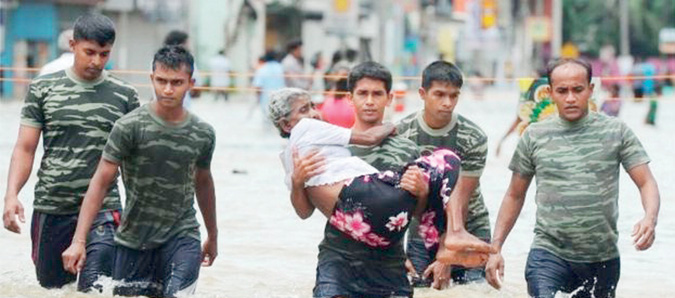
Over the desolate watery wastes,
Dulling the glow of the fabled Gem,
There opens a rainbow of opportunity,
For the peoples North and South,
To not only meet and greet,
But build a rock-solid bridge,
Of mutual help and solidarity,
As one undivided suffering flesh,
And we are moved to say urgently-
‘All you who wax so lyrically,
Of a united nation and reconciliation,
Grab this bridge-building opportunity.’
By Lynn Ockersz
-

 News4 days ago
News4 days agoOver 35,000 drug offenders nabbed in 36 days
-
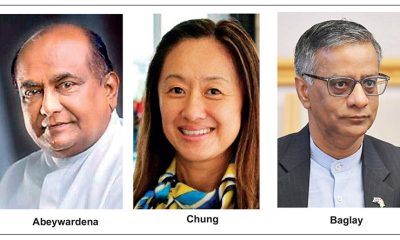
 Features2 days ago
Features2 days agoFinally, Mahinda Yapa sets the record straight
-
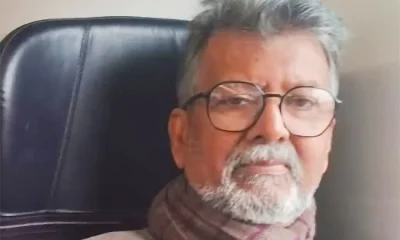
 News3 days ago
News3 days agoCyclone Ditwah leaves Sri Lanka’s biodiversity in ruins: Top scientist warns of unseen ecological disaster
-

 Business6 days ago
Business6 days agoLOLC Finance Factoring powers business growth
-

 News6 days ago
News6 days agoCPC delegation meets JVP for talks on disaster response
-
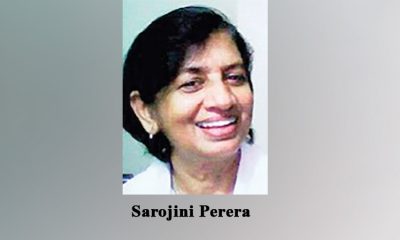
 News6 days ago
News6 days agoA 6th Year Accolade: The Eternal Opulence of My Fair Lady
-

 News4 days ago
News4 days agoRising water level in Malwathu Oya triggers alert in Thanthirimale
-
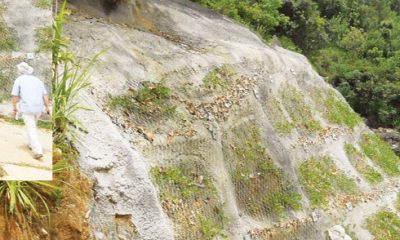
 Features5 days ago
Features5 days agoThe Catastrophic Impact of Tropical Cyclone Ditwah on Sri Lanka:













